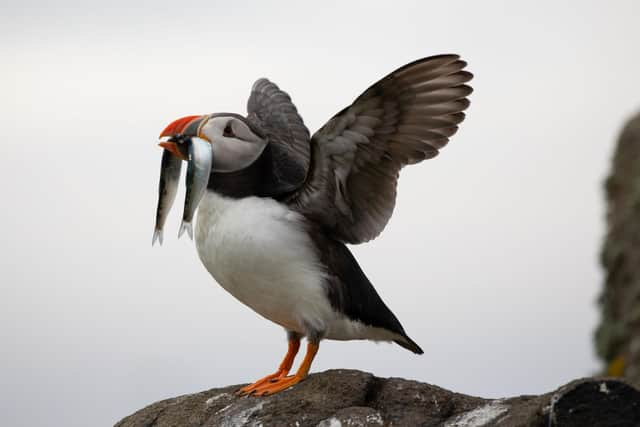COP26: Why Scotland's puffins must be protected at all costs
A sea mist, also known as a haar, had descended as we approached the Firth of Forth island by speedboat.
It gave an otherworldly atmosphere to the scene as the very first puffin emerged out of the opaque fog.


Advertisement
Hide AdAdvertisement
Hide AdFlapping its little wings for dear life, its beak was stuffed with the sandeels it was carrying back to its nest on the island – some invisible calling guiding its way through the mist.
Very quickly, more and more puffins appeared, and they were joined by shags, razorbills and gannets, all gliding in the same direction.
The island emerged from the mists like something out of a dream, or Skull Island from King Kong.
On every ledge, every possible available surface, were sea birds. It is a place completely overtaken by nature.
In fact, when you get off the boat, you are almost immediately dive-bombed by furious arctic terns protecting their chicks.
When you tour the island, you must stick to the paths as puffins nest in burrows underground – not easy to spot and easily trampled.
Humans are guests here, permitted to respectfully observe the some 200,000 seabirds, including 90,000 puffins, which visit the Isle of May each year to breed and nest.
I have never been anywhere on Earth so overwhelmingly beautiful and wild.
Advertisement
Hide AdAdvertisement
Hide AdYou can perhaps understand then why I was so horrified to learn that puffins are among the species most threatened by climate change.
The Worldwide Fund for Nature has singled them out in a list of 12 species from all over the world which are “feeling the heat” of global warming most keenly.
A rise in ocean temperature is threatening the extinction of their most common prey, the sandeel. Climate change is also causing more drastic weather events at sea – where the puffins live most of their lives.
When we think of climate change, we often think of it as something abstract, which is happening far away.
But one in nine Scottish species are at risk of extinction. Leaders must act now, on the last day of COP26, to keep global temperatures below 1.5C, to preserve our wondrous species.
Comments
Want to join the conversation? Please or to comment on this article.

